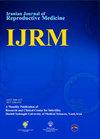Effect of body weight on serum homocysteine level in patients with polycystic ovarian syndrome: A case control study
引用次数: 12
Abstract
Background: Polycystic ovarian syndrome (PCOS) represent one of the common endocrine disorders which influence around 8% of reproductive women whom usually suffering from obesity and increase cardiovascular risk. Serum homocysteine levels are associated with bad impact on endothelial functions and considered as an independent risk factor for cardiovascular disease. Objective: The aim was to study the level of plasma homocysteine in obese and non-obese Iraqi patients with PCOS. Materials and Methods: This study was carried out on 207 women. Of theme, 101 women with PCOS and 106 PCOS- free women served as controls. Blood sample was taken from each participant on the 2nd day of menstruation morning after an overnight fasting. Serum levels of follicle-stimulating hormone (FSH), luteinizing hormone (LH), free testosterone and androstenedione were measured. Moreover, total lipid profile and plasma homocysteine levels were measured in both groups. Results: Sixty percent of PCOS women were overweight or obese and 56% of them had a waist circumference >88cm. Moreover plasma homocysteine concentrations were found to be higher in patients with PCOS (11.5±5.41μmol/L) as compared with control (8.10±1.89 μmol/L) (p<0.002). Furthermore the homocysteine concentrations were 13.19±5.97 μmol/L and 9.38±2.99 μmol/L in both obese and normal-weight PCOS women respectively which was significantly higher than obese (p<0.002) and normal-weight (p<0.004) control women. Conclusion: Increase in body weight is not an independent risk factor to increase plasma homocysteine levels in PCOS women.体重对多囊卵巢综合征患者血清同型半胱氨酸水平的影响:一项病例对照研究
背景:多囊卵巢综合征(PCOS)是一种常见的内分泌疾病,影响约8%的育龄妇女,她们通常患有肥胖并增加心血管风险。血清同型半胱氨酸水平与内皮功能的不良影响相关,被认为是心血管疾病的独立危险因素。目的:研究肥胖和非肥胖伊拉克多囊卵巢综合征患者血浆同型半胱氨酸水平。材料与方法:研究对象为207名女性。101名多囊卵巢综合征妇女和106名无多囊卵巢综合征妇女作为对照组。在禁食一夜后,每位参与者在月经的第2天早上采集血液样本。测定血清促卵泡激素(FSH)、促黄体生成素(LH)、游离睾酮和雄烯二酮水平。此外,测量两组患者的总脂质谱和血浆同型半胱氨酸水平。结果:60%的PCOS女性体重超重或肥胖,56%的PCOS女性腰围为808cm。PCOS患者血浆同型半胱氨酸浓度(11.5±5.41μmol/L)高于对照组(8.10±1.89 μmol/L) (p<0.002)。肥胖和正常体重PCOS女性的同型半胱氨酸浓度分别为13.19±5.97 μmol/L和9.38±2.99 μmol/L,显著高于肥胖(p<0.002)和正常体重(p<0.004)对照组。结论:体重增加不是PCOS患者血浆同型半胱氨酸水平升高的独立危险因素。
本文章由计算机程序翻译,如有差异,请以英文原文为准。
求助全文
约1分钟内获得全文
求助全文

 求助内容:
求助内容: 应助结果提醒方式:
应助结果提醒方式:


